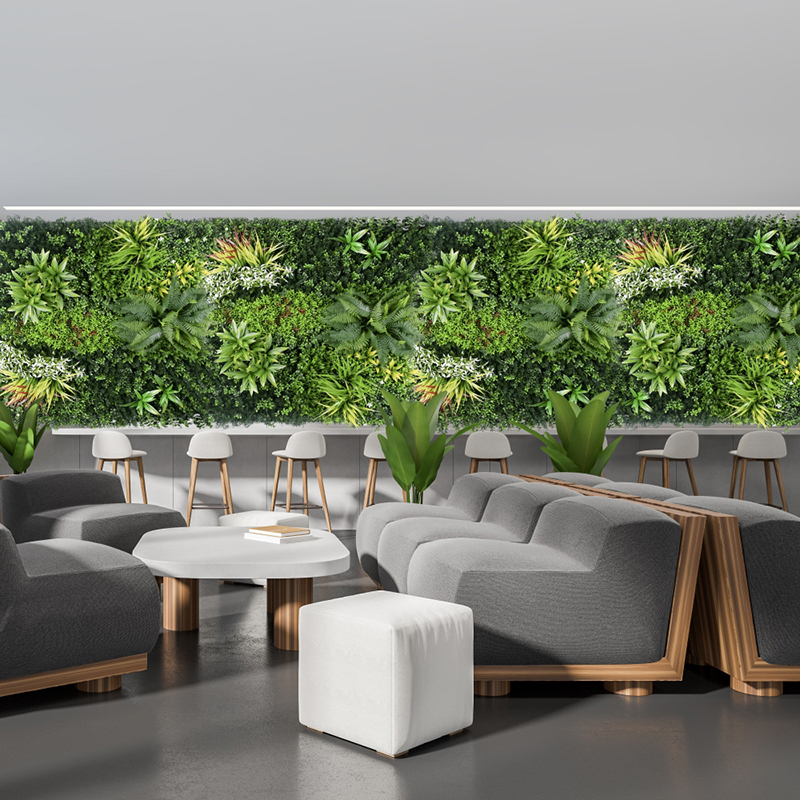Effective Science Communication Strategies for 3D Artificial Vertical Gardens
Raising public awareness about the benefits and innovations of 3D artificial vertical gardens requires tailored science communication approaches that engage diverse audiences. From educational institutions to community events, these strategies demystify the technology while highlighting its environmental, aesthetic, and functional advantages. By leveraging visual storytelling, interactive experiences, and collaborative partnerships, communicators can inspire adoption and support for vertical gardens in urban spaces.

Leveraging Digital Platforms for Visual Engagement
Digital media offers unparalleled opportunities to showcase the design and functionality of 3D artificial vertical gardens through immersive visuals. Short-form video content, such as Instagram Reels or TikTok clips, can demonstrate the installation process of a vertical garden on a high-rise building or explain how synthetic foliage mimics natural plant behavior. These bite-sized videos often perform well on social algorithms, reaching audiences who may not actively seek environmental information.
Virtual tours and 360-degree imagery allow users to explore vertical gardens from their devices, bridging the gap between physical and digital experiences. For example, a museum or university could create a virtual exhibit where visitors “walk through” a vertical garden, learning about its role in air purification or biodiversity support via interactive hotspots. Augmented reality (AR) filters, which overlay digital vertical gardens onto real-world environments through smartphone cameras, further enhance engagement by letting users visualize installations in their own homes or neighborhoods.
Infographics and animated explainers simplify complex concepts, such as the water-saving mechanisms of drip irrigation systems or the structural engineering behind load-bearing frames. By combining concise text with eye-catching visuals, these tools cater to visual learners and are easily shareable across platforms like Pinterest or LinkedIn, expanding their reach to professionals in architecture and urban planning.
Community Workshops and Hands-On Learning Experiences
Local workshops and DIY sessions foster direct interaction with 3D artificial vertical gardens, making the technology more relatable. Libraries, community centers, or schools can host events where participants assemble small-scale vertical garden models using recycled materials, learning about sustainability principles in the process. Facilitators might guide attendees through activities like calculating the carbon footprint reduction of a synthetic garden versus a traditional one, emphasizing practical environmental benefits.
School programs tailored to different age groups can integrate vertical gardens into STEM curricula. For younger students, activities might focus on identifying plant shapes used in synthetic foliage and understanding their ecological roles, such as providing habitat for insects in artificial systems. High school classes could delve into engineering challenges, like designing a frame that withstands wind loads in coastal cities, using basic physics concepts. These hands-on lessons cultivate early interest in green technologies and career pathways.
Collaborations with local artists or designers can transform workshops into creative endeavors. For instance, a community mural project might incorporate 3D artificial vertical garden elements, blending art with environmental education. Participants learn about material durability and color retention while contributing to a public artwork that sparks conversations about urban greenery.
Partnerships with Industry and Academic Institutions
Aligning with universities, research labs, or nonprofits lends credibility to science communication efforts and provides access to cutting-edge knowledge. Joint webinars featuring engineers, ecologists, and urban planners can address topics like the role of vertical gardens in smart city initiatives or their potential to mitigate heat islands in dense urban areas. These events often attract professionals seeking continuing education credits, expanding the audience beyond general enthusiasts.
Academic publications and white papers, when translated into layperson-friendly summaries, can inform policymakers and community leaders about the long-term benefits of vertical gardens. For example, a study analyzing the energy savings from reduced building cooling needs due to vertical garden shading could be adapted into a policy brief advocating for their inclusion in green building codes.
Industry conferences and trade shows offer platforms to demonstrate vertical garden innovations to a targeted audience. Interactive booths with live demonstrations of irrigation systems or material durability tests help attendees grasp technical details firsthand. Speaking engagements at these events allow experts to share case studies, such as a vertical garden project that revitalized a neglected urban alley, inspiring replication in other regions.
Public Installations and Pop-Up Exhibits
Temporary public installations serve as powerful conversation starters, especially in high-traffic areas like parks or transit hubs. A pop-up vertical garden display might include informational plaques explaining its design process, from material selection to installation challenges, alongside QR codes linking to deeper resources. By situating these exhibits in everyday environments, organizers make vertical gardens feel accessible and relevant to daily life.
Seasonal themes can amplify engagement. For example, a fall-themed installation might use synthetic foliage in autumnal hues, paired with signage discussing how vertical gardens reduce leaf litter in urban areas compared to natural plants. During environmental awareness months like Earth Day, installations could highlight sustainability metrics, such as the number of plastic bottles repurposed into synthetic leaves.
Collaborating with local businesses can extend the impact of pop-up exhibits. A café hosting a vertical garden display might offer discounts to customers who learn about its benefits via a short quiz, creating a fun incentive for engagement. These partnerships also encourage private-sector investment in vertical garden projects, driving broader adoption.
Conclusion: Amplifying Impact Through Diverse Channels
Effective science communication for 3D artificial vertical gardens requires a multi-channel approach that combines digital innovation, community interaction, and institutional collaboration. By tailoring messages to different audiences—from students to policymakers—and using engaging formats like videos, workshops, and public art, communicators can demystify the technology and inspire action. As urbanization continues to reshape landscapes, these strategies will play a vital role in promoting vertical gardens as a sustainable solution for modern cities.
Contact: Amy
Phone: 86-15311787313
E-mail: info@foszmac.com
Whatsapp:86-15311787313
Add: Fengtai District, Dacheng Road, No.24 Building, Room 203, Beijing, China